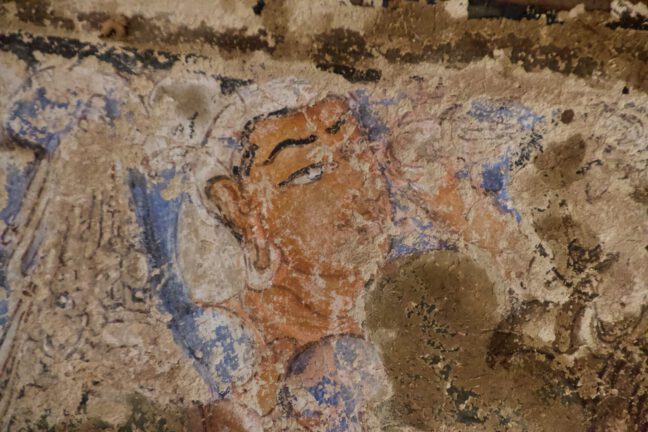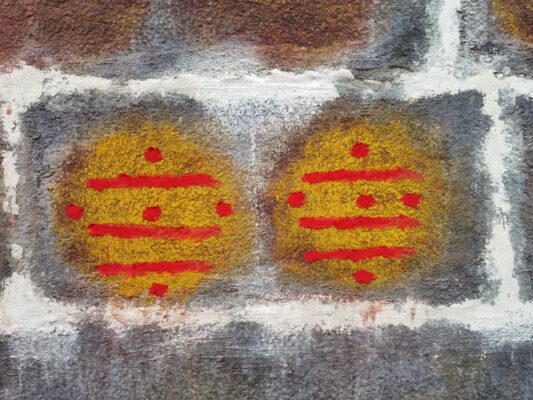In Western analytical-modern theories of consciousness, i.e. those that see themselves as empirical-scientific, a correlation between matter and consciousness is always assumed. This in itself is relatively uncontroversial, as the vast majority of theories are based on this assumption. Birth and death mark the cornerstones of this correlation.
Now the question arises: What does this correlation look like? Does consciousness determine matter, or does matter determine consciousness, or is it an interaction?
3 Variants of the relationship between consciousness and matter
The first variantthat consciousness determines matter is a position that we find in most spiritual schools of thought, but also in an analytical transcendental philosophy or in idealism. Here, consciousness is a force in its own right that acts on its own and may be anchored in a higher consciousness. What these schools of thought have in common is that they are based on a self in the sense of an autonomous ego or soul.
The second variant We find this in materialistic thought constructs, i.e. strictly empirical theories, or analytical reductionist thought constructs. Biological beings are determined solely by materialistic processes. Consciousness is a luxury and runs after materialistic processes. There is no free will, it is an illusion that may bring an evolutionary advantage, but nothing more.
The third variantThe second, that of interaction, is what is closest to our everyday sensation. We sometimes feel driven by our material existence, i.e. by our body or the constraints of our environment. We have the feeling that we function automatically. At the same time, however, we also have experiences of free will. For example, when we are unable to make a decision or leave familiar paths, we think that these are free decisions.
What does that mean?
In empirical science, it is often noted that there are many studies that support the second variant. In essence, the experiments look like this: A person is connected to an EEG, i.e. their brain waves are measured. This can also be done in a more differentiated way using computer tomography. The test subjects are then asked to make a decision. If a deflection can be seen on the measuring devices, which indicates that the decision has been made in the brain, and this measurement precedes the consciously communicated decision of the test subject. Then, according to the claim, free will is an illusion. What is important here is that there is a time difference at all, not how long the time difference is. This is in the millisecond range anyway.
What would the opposite model, i.e. the first variant, look like? The test subject would make a decision, express it, and then the brain would carry out the command. And what would that look like empirically? Consciousness changes the sensory apparatus, the body, in order to express a thought, i.e. a decision, which on the one hand has already been made, but on the other hand has not yet physically materialized. During the expression of the thought, the decision is first implemented on a neuronal level.
The third variant, that of interaction, is the most difficult. Two very different systems are assumed to interact here. One is the physical, biochemical world, the other the world of human consciousness. An important question here is that of the link. What does the bridge look like? One assumption is that both systems are ultimately logical, i.e. both empirically scientific on the one hand and rational on the other.
Does God roll the dice?
Einstein said that God does not play dice. That actually sums up the paradox quite nicely. God, who created the universe and with it the dice and the laws of chance, is not subject to them.
In the Vedas this is expressed by the relation of Brahman (universal self, not in the sense of a personal God), Purusha (consciousness) and Prakriti (the material world in motion, nature). Atman, the individualized self (though not in a personalized sense), appears in this three-way relationship1.
It is amazing how differentiated the rishis, i.e. the seers, saw the relationship between consciousness and matter in deep meditation over 3000 years ago. Their view that evolution is preceded by involution sounds strange today, but actually only describes the reciprocal relationship, the interaction between consciousness and matter in a temporal extension.
Levels of consciousness
The beginning does not lie in the Big Bang, but in the common ground of matter and consciousness. We can call this logic, law, rationality, Brahman, creator, nirvana, it doesn't really matter at this point, we are dealing with a priori. Not in the epistemological sense, but in the ontological sense.
Natural laws are not created by matter, but matter follows them. What if the universe follows a law that precedes it? This is somehow the basic assumption of the reductionist scientific world view. However, this world view does not explain where the laws came from. Were they already there before the Big Bang? Or did they arise together during the Big Bang? They certainly did not come into being after the Big Bang...
It seems much more plausible to me to assume that there is consciousness that can act on its own - different forms of consciousness, at different levels of consciousness.
Free will does not lie in the question of whether the choice between an apple and a pear has already been made in the brain before it appears in consciousness. Freedom lies in thinking. The adventure of thinking is open and expanding. Let us not allow ourselves to be blinded by regression.
On the ladder of knowledge, thinking is followed by Vijnana and Satchitananda. A higher consciousness that goes beyond the purely rational or emotional way of thinking. Vijnana is a way of thinking that includes a world view. A real view of the world, in its complexity and implications. An understanding of the world that involves a high degree of insight, reflection and wisdom. Satchitananda are the higher levels of spiritual consciousness. It is possible to experience them, but it is difficult to argue about it. I have spent decades trying to convince myself and others that this does not exist - unsuccessfully.
hiraṇmáyena pā́treṇa satyásyā́pihitaṃ múkham |
tát-tváṁ pūṣann-ápā́vṛṇu satyádharmāya dṛśtáye |15|
(15) The face of Truth is covered with a brilliant golden lid; that do thou remove, O Fosterer, for the law of the Truth, for sight. (Isha Upanishad)
There is a beautiful word in Sanskrit: Dvaitadvaita - dualism-non-dualism, i.e. the duality of duality and non-duality.
1 A somewhat daring parallel can be seen in Christianity: The relation of Father, Son and Holy Spirit symbolizes the same principle. God as Creator is equated with Brahman, the Holy Spirit resembles Purusha/Shakti, and Praktriti and Atman are drawn together and replaced by the patriarchal Son. This is then called the Trinity.






